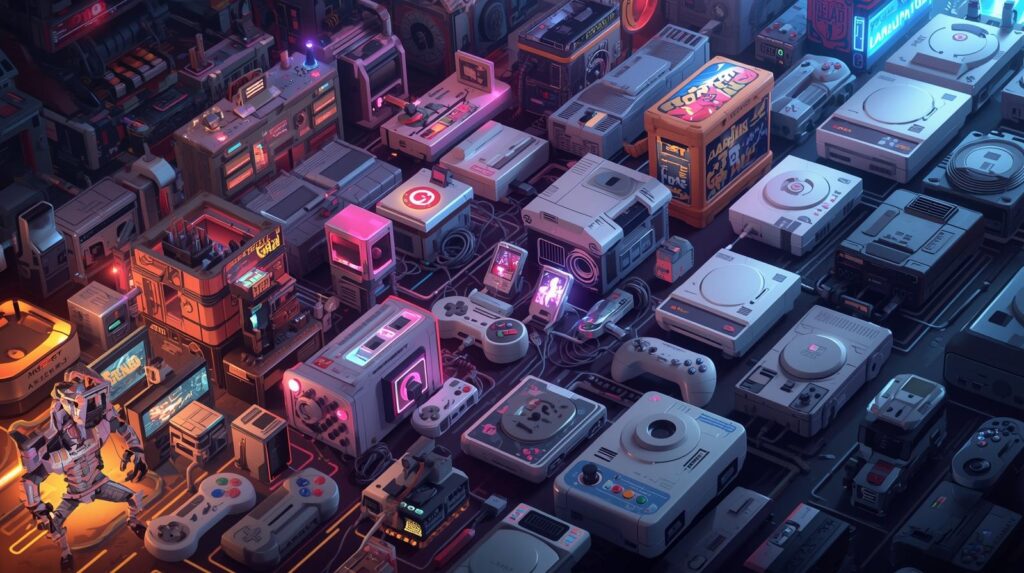The journey of gaming consoles is a fascinating reflection of technological advancement, innovation, and changing consumer preferences. From the early days of simple pixelated games to the immersive, hyper-realistic experiences of today, gaming consoles have undergone significant transformations. This evolution not only marks technological progress but also highlights the impact of gaming on culture and business strategy.
The inception of gaming consoles dates back to the 1970s, when the first home systems made their debut. These groundbreaking devices introduced the concept of interactive electronic entertainment. Although primitive by today’s standards, they laid the foundation for an industry that would revolutionize leisure and digital experiences. The simplicity of early consoles, with their basic graphics and limited gameplay, belied the potential of what was to come.
The Rise of Competition
The late 1980s and 1990s saw a surge in competition as multiple companies entered the market. This era was pivotal, not only in advancing technology but also in shaping consumer expectations and preferences. Iconic characters and franchises emerged during this time, leaving a cultural impact that still resonates today. The focus was on enhancing graphics, improving gameplay mechanics, and expanding game libraries to capture audiences worldwide.
The Era of Innovation

The turn of the millennium ushered in a new era of innovation with consoles that pushed the boundaries of what was possible. Systems incorporated powerful processors, advanced graphics, and a growing emphasis on online connectivity. This period marked the beginning of gaming as a social experience, allowing players to connect globally. The integration of multimedia capabilities also positioned consoles as comprehensive entertainment systems, broadening their role in the digital household.
The Modern Age
Today, gaming consoles are at the forefront of technological innovation. The latest generations deliver breathtaking visuals, lightning-fast performance, and seamless integration with digital services. Immersive experiences are increasingly driven by technologies such as virtual reality and augmented reality. Meanwhile, the rise of cloud gaming is poised to transform the industry once again, enabling access to games without the need for dedicated hardware.
Implications for Business Strategy
The evolution of gaming consoles offers valuable insights for business strategists and technology leaders. The industry’s ability to adapt to changing consumer demands and leverage emerging technologies serves as a model for other sectors. Understanding this history provides a framework for anticipating future trends and aligning business strategies with ongoing digital transformation.
Conclusion
The history of gaming consoles is not just a chronicle of technological progress but also a testament to the power of innovation and strategic foresight. As the industry looks to the future, its lessons continue to inform and inspire leaders across various domains.




